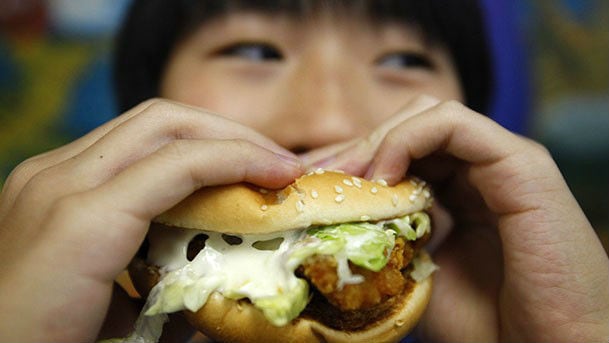It was also found that unhealthy food ads were delivered by more ‘enticing formats’ compared to ads for other foods.
According to the researchers, online video platforms have surpassed television as the primary choice for screen viewing among children. However, while the marketing of unhealthy food to children is a key risk factor for childhood obesity, the extent of food marketing through such media has remained relatively uninvestigated.
However, the exposure of children to food and beverage advertising on television and other media has been shown to influence their food preferences, purchases and consumption.
What is more worrying is that about two-thirds of obese children eventually become obese adults, carrying with them an increased risk of chronic disease.
Unhealthy foods better marketed
The researchers used social media analytics site SocialBlade.com to identify the most popular YouTube videos that targeted children. The ads that were encountered during viewing were then recorded and analysed for the type of product promoted and ad format.
Food and beverage ads were further coded based on the food category and the persuasive marketing techniques used.
Out of a total of 187 ads from 250 videos screened, food and beverage ads were the most common at 38%, of which 56.3% promoted non-core foods.
Interestingly, the most common food type advertised was vitamin/mineral or dietary supplements (28.2%), which fell under the miscellaneous food category. However, this was closely followed by fast food (21.1%) and chocolate and candy (16.9%), both under the non-core category.
Among the ads promoting non-core foods, the most commonly-employed persuasive marketing techniques were taste appeal (42.3%), product uniqueness or novelty (32.4%), animation (22.5%), fun appeal (22.5%), the use of promotional characters (15.5%), price (12.7%), and health and nutrition benefits (8.5%).
Power of the medium
The researchers stated that YouTube may prove to be a much more potent marketing medium than television.
Unlike on broadcast television where there are specific timeslots for children's programmes, videos on YouTube are easily accessible and available at any time.
The platform also has the potential to maintain children's attention for longer periods as they are able to choose which videos they want to watch, and for as many times as they like.
Ads on social media are further tailored to one's personal interests, facilitated by browser cookies that continuously collect information such as visited websites or products viewed in online stores.
“Such behavioural or personalised marketing has greater persuasive power, specifies audiences with precision, and has the ability to target the most vulnerable population groups,” they said.
The researchers mitigated any potential bias of cookies by using the “incognito” browser mode during recording sessions. Thus, the data collected on ads in the study were assessed to be the minimum extent of non-core food and beverage marketing within child-oriented videos on YouTube.
“We anticipate the exposure may be even more prevalent in actuality when cookie-facilitated targeted marketing is used by food and beverage advertisers to track children's online habits,” they said.
Protective measures
The researchers suggested that the policies regulating food marketing to children need to be extended to cover online content, especially in a rapidly-evolving digital media environment.
According to them, the YouTube Kids app sets a precedence for a complete ban of food marketing in a media environment primarily aimed at children. It is a separate entity from the regular YouTube mobile app, and uses filters powered by algorithms to select family-friendly videos from YouTube. It also allows certain parental controls and settings such as setting a timer to limit how much time a child spends on the app.
“Although sponsored commercials still appear in videos viewed on the app, its creators' decision to explicitly ban any ads related to consumable food and drinks regardless of nutritional content is commendable,” they said.
The researchers said, to their knowledge, this is the first case study to examine food and beverage advertising encountered in YouTube videos targeted at children.
Source: Childhood Obesity, Jul 2018
DOI: doi.org/10.1089/chi.2018.0037
“What's on YouTube? A Case Study on Food and Beverage Advertising in Videos Targeted at Children on Social Media”
Authors: LeeAnn Tan, See Hoe Ng, Azahadi Omar and Tilakavati Karupaiah.

